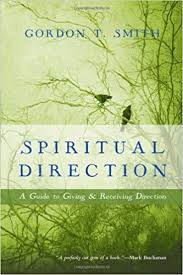 “Spiritual Direction” by Gordon T. Smith is a thin book. Having read a few of the author’s books, I looked forward to this one. Particularly since the subject was something I was interested in. It was an easy read. It was obvious that the author, though an evangelical, is aware of different traditions of spirituality, but is appreciative of this Catholic practice. He is obviously a practitioner himself. I found the book informative and useful and practical. Here are the many things I learned:
“Spiritual Direction” by Gordon T. Smith is a thin book. Having read a few of the author’s books, I looked forward to this one. Particularly since the subject was something I was interested in. It was an easy read. It was obvious that the author, though an evangelical, is aware of different traditions of spirituality, but is appreciative of this Catholic practice. He is obviously a practitioner himself. I found the book informative and useful and practical. Here are the many things I learned:
- The aim of spiritual direction is to help the directee enrich his or her intimacy with God and to learn how God is present and at work in his or her life situation.
- The best form of training for spiritual direction is to have received good spiritual direction. The wannabe spiritual director (SD) has to be formed, not just skilled or informed. Some formal training will then be helpful.
- The SD focuses attention on the presence and movement of the Spirit in the directee’s life.
- Listening with empathy is an absolute must for the SD. It is good to have biblical knowledge, and some understanding of spiritual heritage but listening well is a premium.
- Pastoral work should include spiritual direction since the aim of spiritual direction is to help the person grow in his relationship with God and to learn to see things from God’s perspective.
- Ideally the directee should be teachable, hungry to grow, willing to submit to God and be of the same sex as the SD.
- Spiritual direction skills can be used in pastoral work, evangelism and friendship.
- It is better for the meeting to be formal and separate from a meal so that there is no distraction.
- One format of the SD meeting is:
- Listen to the directee talk about significant experiences in relationships and work (30 minutes).
- Comment of where God seems present and active, and response from the directee (20 minutes).
- Final comments and suggestions (10 minutes).